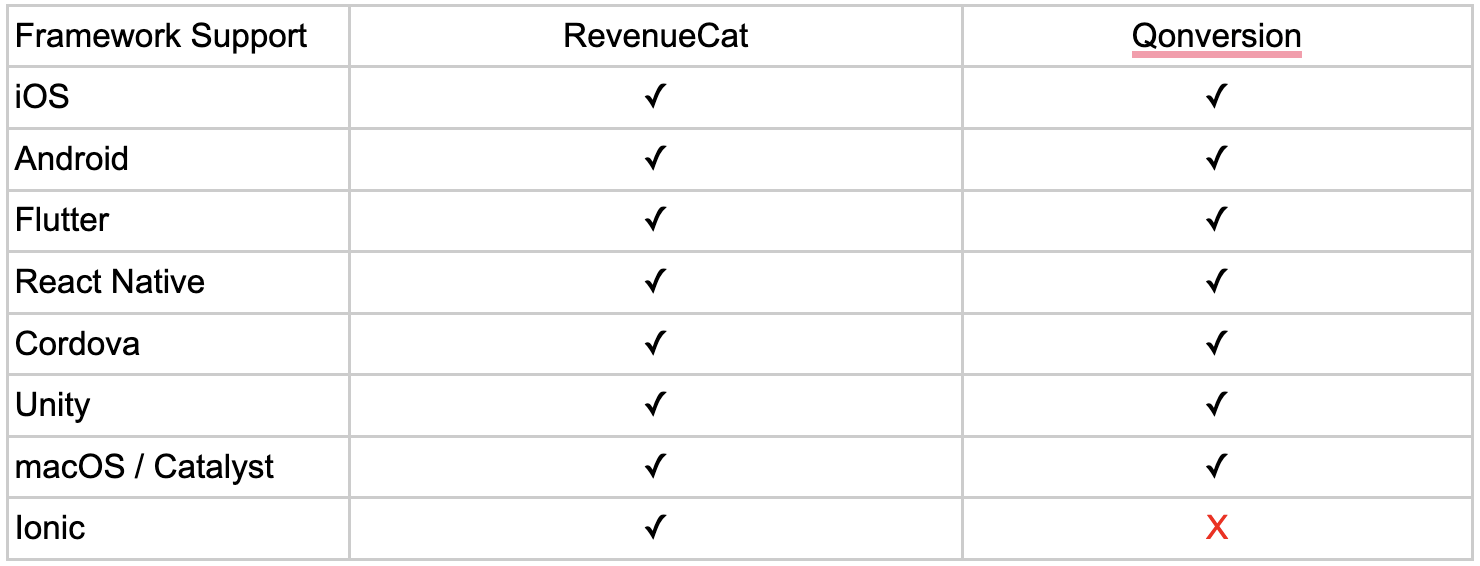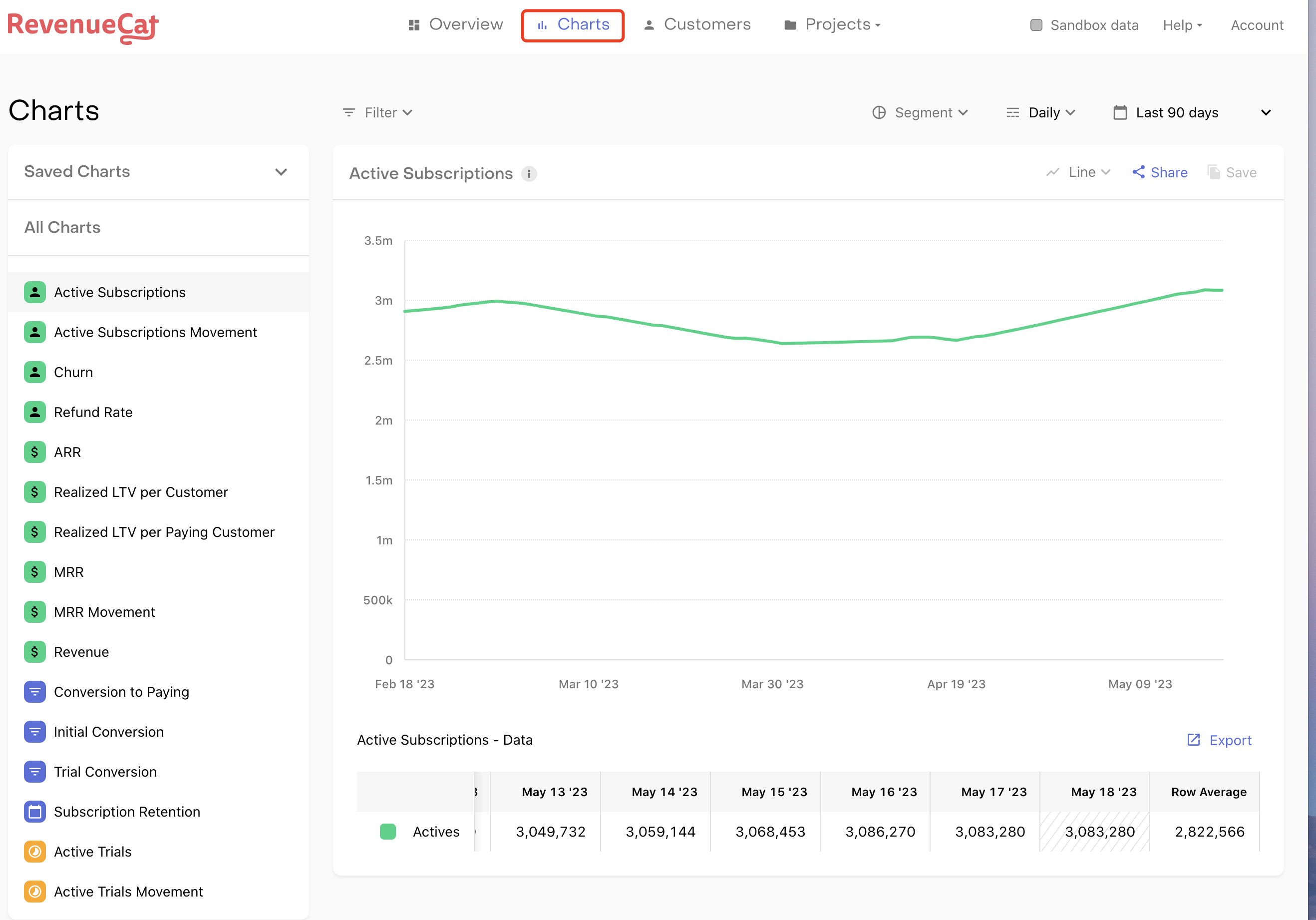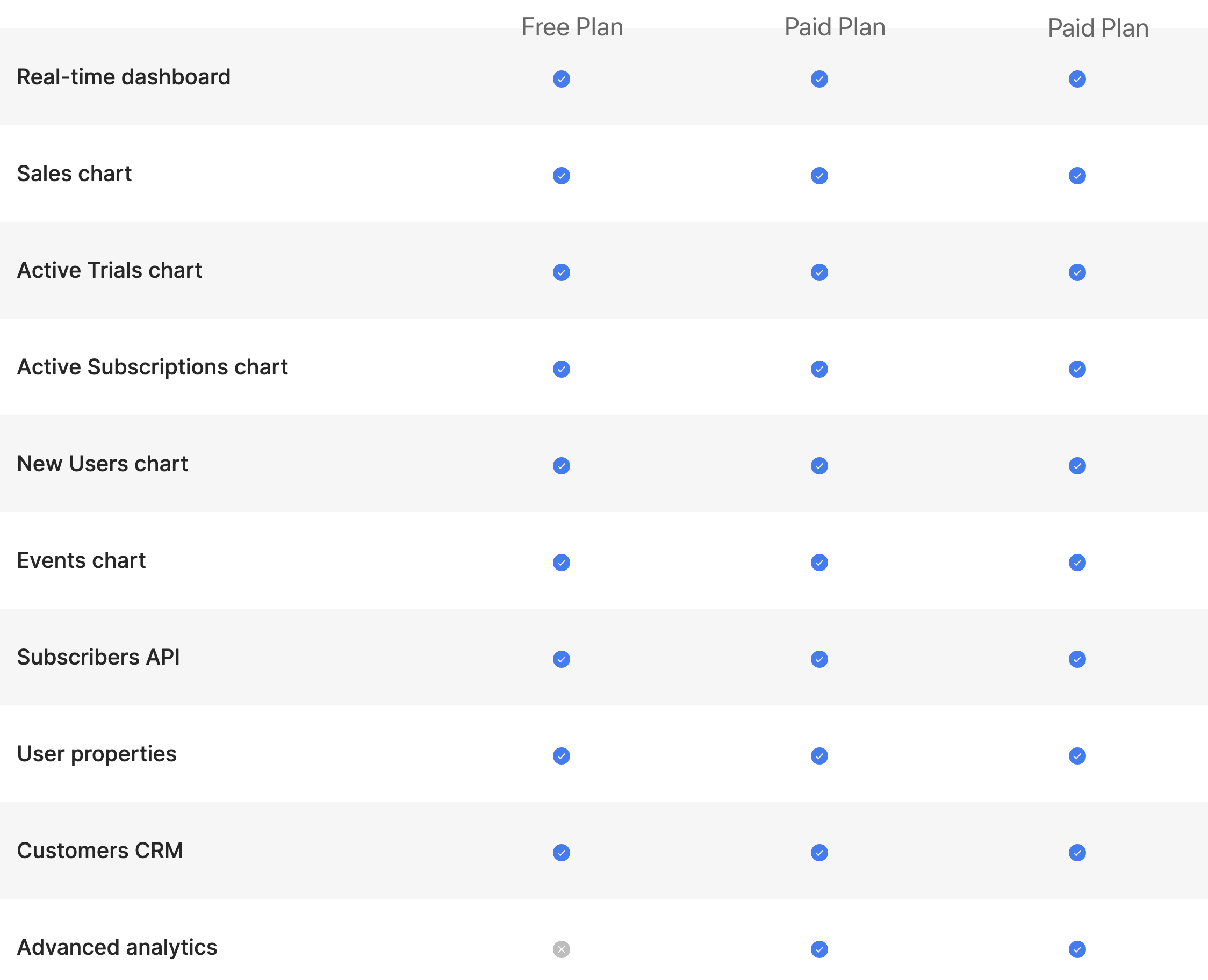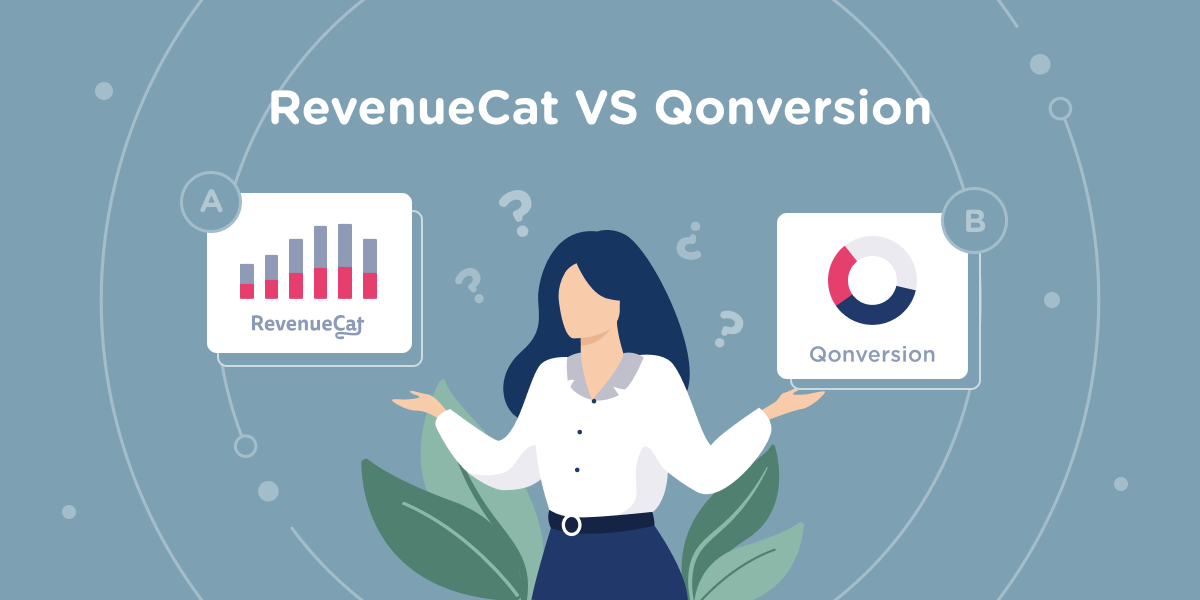While in-app subscriptions can bring your app business to the next level, it does indeed involve a lot of technical work to build up subscription infrastructure as well as manage it constantly.
To simplify the technical work and free app developers from the tedious and endless subscription management work, you may consider employing a subscription management platform to take care of the purchase backend for your subscription apps instead.
What are In-app Subscription Management Platforms?
In-app subscription management platforms usually offer purchase backend SDKs to handle receipt validations and manage in-app subscriptions across platforms.
Apart from helping with the implementation and constant maintenance of the in-app subscription infrastructures, these platforms are often capable of tracking subscription key data & KPIs, managing subscribers’ access, integrating with other third-party tools for a unified view of in-app subscription performances, and doing no-code experiments, such as paywall A/B testing, push notifications, etc.
There are actually a lot of subscription management and analytics platforms for you to choose from. In this article, we will mainly focus on these two subscription management platforms: RevenueCat and Qonversion. We will talk about what they can do and the differences between them, so you can make a better choice.
What is RevenueCat?
RevenueCat is one of the in-app subscription management platforms. It offers SDK/API for developers to confidently deploy in-app purchases and subscriptions, across platforms. It also enables you to analyze IAP(In-App Purchase) data, and manage products and subscribers.
What is Qonversion?
Qonversion is another in-app subscription management platform. It provides the back-end infrastructure to validate user receipts and manage access to paid content on your app, so you do not need to build your own server. It also provides comprehensive subscription analytics and out-of-the-box integrations with the leading marketing, attribution, and product analytics platforms.
RevenueCat vs Qonversion: What are the Differences?
From the above introduction, we can know that RevenueCat and Qonversion can be alternatives to each other. So what are the differences? Now, let’s dive into the feature discrepancy between these two in-app subscription management platforms.
Subscription Purchase Backend SDK
Both RevenueCat and Qonversion offer purchase SDK for faster implementation of in-app subscription infrastructure.
By installing the SDK of one of the subscription management platforms, it will start handling the receipt validations and subscribers’ access as well as maintaining the infrastructure according to app store changes. This is the basic feature of all subscription management platforms. So there is little difference between them.
However, when it comes to the framework you are using to build your apps, they are slightly different.
RevenueCat supports installing their SDKs on iOS, Android, Flutter, React Native, Cordova, Unity, macOS / Catalyst, and Ionic; while Qonversion offers SDK for iOS, Android, Flutter, React Native, Cordova, Unity, and macOS / Catalyst.
You can see clearly in the following chart—the difference between them in terms of framework support is that Qonversion doesn’t support Ionic yet.

So if your app is built under Ionic and you just want to choose between these two subscription management platforms, you have to opt for RevenueCat. However, if your app is under the framework of other platforms, you need to compare other features and find the one that best suits your need.
Subscription Analytics
Subscription analytics, if done right, is a powerful booster to grow your in-app subscriptions. It helps you dive into the performance of your in-app subscriptions, and extract deeper insights into the data, which can further support your marketing decision-making. With data-driven marketing strategies, you get a big chance to grow subscription revenue.
Both RevenueCat and Qonversion offer real-time subscription analytics dashboards that show an overview of how in-app subscription performs. Metrics include trials, subscriptions, MRR, revenue, users, etc.
However, if you want to view the data charts or graphs, which can show the trending growth of a particular metric and enable you to make comparisons, you may decide on what kind of them you would like to see. The form of Charts and Graphs vary in these two subscription management platforms.

RevenueCat-charts (only available on a paid plan)

Qonversion-charts (charts in Advanced analytics are available on the paid plan)
It is necessary to mention here that you must subscribe to a paid plan to view any of the RevenueCat charts. While you have some free charts (but not all) to view with Qonversion.
Pro tip: There are actually subscription management platforms that offer all the subscription metrics and advanced analytics, such as cohort analytics and funnel analytics, on their Free plan. An example of those would be Appflow.ai.
So it all depends on your need, if you don’t have a money issue, then compare the metrics and graphs these two platforms have and pick the one you want. However, if you want to lower the budget, take the price into consideration. Choose the more affordable one that can meet your basic subscription analytics need. Turning to a free one can also be a good choice as long as it satisfies your need.
All in all, subscription analytics metrics are almost the same on these two platforms. It is only your analytics need and the price that you have to consider when making up your mind.
Customer CRM
Customer CRM can be a feature that is often underestimated. But in fact, it is really important to have a CRM system that allows you to understand your subscribers at both the individual level and cohort level. So you can support them well when needed and craft better user experiences to higher the retention rate.
In terms of customer CRM, both RevenueCat and Qonversion offer customer lists and user profiles for you to explore and make modifications to your subscribers’ access level.

RevenueCat-customer-profile

Qonversion-customer-profile
However, as you can see in the above screenshots: RevenueCat’s customer profile seems to be more detailed, showing basic information, like user ID, project, the total spent and so on, as well as the customer history.
And for Qonversion, the customer profile seems to be more concise and the customer history is missing compared with RevenueCat, though it is said that you can send custom user properties to the platforms and use them for customer segmentation and analytics.
These two platforms both provide customer profiles and default user lists for free. But if you want to create a custom list, you have to pay for it using RevenueCat. While it is free when you are using Qonversion.
Pro tip: the best free subscription management and analytics platform—Appflow.ai offers you all the information you need to know about your subscribers at the individual level. You will get a detailed user profile showing basic information about your users as well as their in-app events(including transaction events and custom events that you send to the platform), all available on the Free plan.
Integrations
Integrations allow you to bring everything on the same dashboard. Integrations, for in-app subscription analytics, bring all data related to in-app subscriptions together to present a unified view for you to vision.
RevenueCat and Qonversion both support integrating with other data platforms.
RevenueCat, at present, supports integrating with these 27 platforms: Adjust, Airship, Amazon S3, Amplitude, Apple Search Ads, Appsflyer, Braze, Branch, CleverTap, Facebook Ads, Google Cloud Storage, Intercom, Iterable, Mixpanel, mParticle, OneSignal, Scheduled Data Exports, Firebase, SearchAdsHQ, Segment, Singular, SplitMetrics Acquire, Slack, Statsig, Superwall, Stripe, Tenjin, and Webhooks.
Qonversion, for now, supports integrating with these 19 platforms: Adjust, Amazon S3, Amplitude, Appsflyer, Braze, Branch, CleverTap, Facebook, Firebase, Google Cloud, Kochava, Mailchimp, Mixpanel, One signal, Segment, Singular, Slack, Tenjin, and Webhooks.
If you have the intention to integrate with any of the platforms that are only supported by one of the subscription management platforms, you will know for sure which platform to choose.
If not, you may want to consider the installation process of the integrations(whether it is easy to integrate) and the price you need to pay for that integrations.
Paywall A/B Testing
Paywall A/B testing can be a really important marketing experiment for apps to pick out the most profitable subscription pricing plan for their subscription apps.
Luckily both RevenueCat and Qonversion support paywall A/B testing. You can test your pricing variations such as pricing, trial length, subscription length, different groupings of products and so on, without app release.
While you can do paywall A/B testing using both of the platforms, they track the experiment results with various metrics.
Qonversion measures these metrics for each experiment:
- Users
- Active Users
- Purchases
- Revenue
- Trial started events
- Trial converted events
- Trial converted revenue
- Subscription started events
- Subscription revenue
- In-app purchase events (non-subscription products)
- In-app purchase revenue (non-subscription products)
- Refund events
- Refund revenue
- Conversion to trial start, %
- Conversion to subscription start, %
While RevenueCat measures the following metrics:
- Customers
- Initial conversions
- Initial conversion rate
- Trials started
- Trials completed
- Trials converted
- Trial conversion rate
- Paid customers
- Conversion to paying
- Active subscribers
- Churned subscribers
- Refunded customers
- Realized LTV (revenue)
- Realized LTV per customer
- Realized LTV per paying customer
- Total MRR
- MRR per customer
- MRR per paying customer
Although the metrics of the results may be different, it can help you understand how your experiment goes and which subscription pricing variation is better. So if you need to choose between these two platforms, pick one that has the metrics that can be easily understood for your report to your boss.
Pricing
A key element to making the choice decision is usually the price. A kind reminder here is that you should also take the available features into account before choosing any subscription management platforms for your subscription apps.
RevenueCat offers three subscription plans: Free, Starter, and Pro. For the Free plan, you have limited features available: subscription SDK, overview metrics and customer profiles.
It cost $8/month/$1000 MTR for the Starter plan, and $12/month/$1000 MTR for the Pro plan.

RevenueCat-pricing
Purchasing the Starter plan provides access to some integrations, charts, custom lists, and 5 admin user seats. The Pro plan provides access to all integrations, pricing experiments, and 10 admin user seats.
Qonversion also offers three plans: Free, Starter, and Growth, all with unlimited seats. With the Free plan, you have access to subscription SDK, overview metrics and some essential charts as well as customer CRM.
You need to pay $6/month/$1000 MTR for the Starter plan and $8/month/$1000 MTR for the Growth plan.

Qonversion-pricing
With the Starter plan, you get access to the advanced charts, and some integrations. While a Growth plan enables you to have all the features under control, including all integrations and paywall A/B testing.
Based on the price comparison, you may consider Qonversion a winner from the aspect of pricing. Well, it is the winner between these two platforms. But there are more affordable ones in the marketplace, for example, Appflow.ai’s Free plan offers access to subscription purchase SDK, real-time data dashboard, customer CRM, all integrations, and all subscription data analytics. And its paid plan starts at $3.88/month/$1000 MTR.
Grow with the Best Free Subscription Management Platform—Appflow.ai
In-app subscription management platforms can really help you out of the limited development resources, and tedious subscription infrastructure maintenance. You can therefore focus on making better apps with better features.
You can utilize subscription management platforms like RevenueCat and Qonversion. Except for these two platforms, there is the best free subscription management platform that you may want to know——Appflow. ai, whose Free plan offers access to both essential and advanced subscription data analytics, all integrations, Apple Search Ads post-install measurements and also subscriber CRM with custom events, and there is more to explore.
To know more about Appflow.ai, sign up here or schedule a call to connect with the team directly.
RevenueCat VS Qonversion: Which to Choose?





